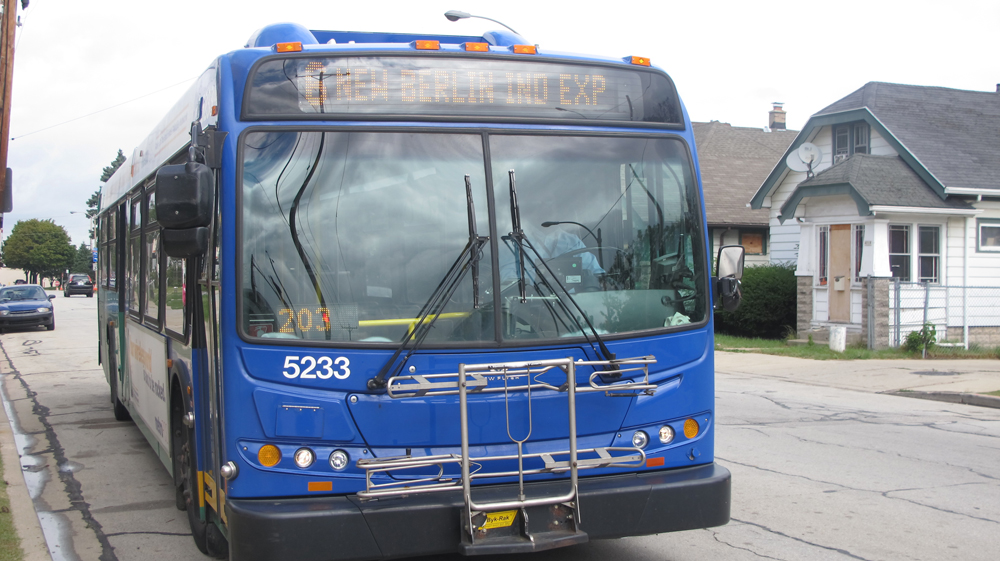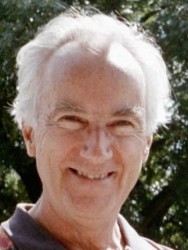Which Transit Projects Should Take Priority?
NNS interviews six transportation advocates on how to make a better Milwaukee.
This is a time of transition for transportation in Milwaukee. Decisions being made now regarding Milwaukee County Transit System routes and budgets, how I-94 west will be rebuilt and the downtown streetcar line will affect city residents and economic development throughout the region for decades to come.
The Milwaukee Neighborhood News Service surveyed six individuals involved in transportation issues to get their perspective on Milwaukee transit: Nick DeMarsh, organizer, Milwaukee Transit Riders Union; Kristi Luzar, deputy director/programs, Urban Economic Development Association of Wisconsin (UEDA); Karyn Rotker, senior staff attorney, American Civil Liberties Union of Wisconsin (ACLU); Lee Schulz, president & CEO, IndependenceFirst; Bill Sell, organizer, Milwaukee Transit Riders Union; past meeting coordinator, Transit Matters; and Kerry Thomas, executive director, Metro Go. Edited versions of their responses are below.
How should transportation planning and projects be prioritized to meet the needs of central city residents (i.e., the reconstruction of I-94 west, the streetcar and the bus service)?
Karyn Rotker, ACLU: All transportation planning must consider the needs of communities of color, and ensure that those communities get a fair share of the benefits of transportation system investments and do not experience disproportionate burdens. The I-94 expansion, as proposed, fails this test: it does not provide communities of color with a fair share of transportation system investments and it imposes disproportionate burdens on them — by not providing transit, by facilitating (segregated) suburban sprawl, by loss of business [and] jobs … and by adverse health and air quality effects.
Nick DeMarsh, Milwaukee Transit Riders Union: Unemployment remains a crisis in Milwaukee. Public transit serves many needs, but job access for transit-dependent individuals must be prioritized. In 1999, Milwaukee had a nationally recognized transit service. If we had that same transit service today, 40,000 more suburban jobs would be accessible by public transit. We need to immediately restore transit service to the levels that existed prior to the cuts that began in 2001. That, however, is not enough. We need a 21st century transit system. Wisconsin Public Interest Research Group has put forward a visionary transit plan for the East-West corridor parallel to I-94 that would be a great first step towards creating regional transit. This would create more economic opportunity in Milwaukee at a fraction of the cost of the proposed I-94 expansion.
Lee Schulz, IndependenceFirst: The availability of accessible, affordable and reliable transportation to/from the central city and between counties plays a major role in determining how independent, productive and integrated the people with disabilities who live in this area can be. Transportation services are crucial to providing all people with access to medical care, nutritional support, education, employment, shopping, and community events and services — some of the things that most challenge central city and citywide residents.
Budget cuts have resulted in service cutbacks and fewer riders on city buses. Now options such as signal priority and bus-rapid-transit are available to improve bus scheduling. Do you favor a more robust bus system with new routes and technologies? If so, how should it be funded?
Nick DeMarsh, Milwaukee Transit Riders Union: We are advocating for infrastructure investments for the East-West corridor on Wisconsin Avenue as a model for transit corridors throughout metro Milwaukee. The improvements include bus-rapid-transit features such as signal prioritization, dedicated bus lanes, larger/heated bus shelters at key intersections, with M-Card vending machines and real-time display information.
Long term, the only way for the Milwaukee area to succeed is with a Regional Transit Authority. This will provide the planning and the revenue for a comprehensive transit system. In the meantime, the city has shown interest in supporting public transit with the streetcar. Since the state refuses to allow an RTA, the city and county should work together to make infrastructure improvements to improve bus service.
Karyn Rotker, ACLU: We believe that all options to create a more robust transit system — including more robust bus service — should be considered. One funding source that should be considered for such capital investments is the federal Surface Transportation Program. This is the federal program that funds much of the highway construction/rebuilding, but under federal law these funds also could be used (“flexed”) to support transit capital investments.
There is also a need for increased state funding, as well as for the state to allow a local/regional funding source for transit operating expenses. Milwaukee is one of the only large metropolitan areas that is forced to use property taxes to support transit, with no specialized funding mechanism.
Kerry Thomas, Metro Go: Faster transit is important for central city residents in particular, to bring scattered job locations into reach, and to reduce commute times. Shorter transit trips make the transit system more convenient and attractive to all residents, which drives up ridership. More people riding the bus generates more revenue to support improved transit, builds a broader base of transit supporters, and accrues more economic benefits to the local community.
High quality transit systems are a central factor in attracting businesses, young workers, visitors, residents and investments that are all needed to boost the local economy.
Before a meaningful discussion of funding of new transit enhancements takes place, the transit plans and costs and the return on investment must be clearly understood. Investments in transit are investments in economic development.
Wisconsin legislators have been known to characterize public transportation as “social service” and prioritize planning and funding accordingly. Other states treat transportation as an economic development tool. Which is it?
Bill Sell, Milwaukee Transit Riders Union: Of course it’s an economic development tool. Those folks who don’t ride do not see the packed buses during rush hours. Riders reduce our state and national dependence on fossil fuel, and cost the government much less to support than building and rebuilding concrete roadways. Transit is the lower-cost solution to our transportation needs.
Kristi Luzar, UEDA: Not only is public transportation an economic development tool, but it is also a regional workforce issue. Having a strong regional transportation system is essential to increasing economic opportunity by providing residents with choices in how they can get to work, school, entertainment destinations, etc. The UW-Milwaukee Center for Economic Development has done a series of important reports over the last five years that demonstrate how cuts in our public transportation system have affected the ability of people to get to large job centers in the region.
I often think of areas of the city where multiple nodes of transportation meet at main arterials and it’s at those intersections where you also find centers of commerce such as office buildings, coffee shops, restaurants, copy shops, small businesses, etc. Increasing mobility of both residents and visitors creates significant opportunities for economic activity.
Kerry Thomas, Metro Go: Transit’s role in economic development is even more important now, and will increase over the coming years. As the economy rebounds and jobs are on a solid growth path, a unique shift is happening: the workforce is not growing because the massive baby boomer generation is retiring. The Wisconsin Department of Workforce Development projects that the number of jobs in our region will outstrip the number of workers available to fill them by 2020.
Employers are already finding it challenging to fill positions and the trend is expected to deepen dramatically. Employers’ access to ALL available workers is a critical economic issue. One of the most critical priorities right now is ensuring the alignment of worker skills and transportation options with employers’ needs, so that residents can be fully employed.
Do you favor the streetcar project as it currently stands?
Kerry Thomas, Metro Go: Since the streetcar project is approved and moving ahead, the urgent question now is what are the best strategies to tap into the job and economic opportunities that will be created in building the streetcar, and the new developments that are spurred by the added value that high quality transit provides.
This investment in transit is creating more than 700 good jobs to build the transit line and thousands more jobs to build and service the development that has already been spurred by the added value that transit provides. Training programs and commitment to hire are in place.
This is a pivotal opportunity for central city residents to advance in the construction trades.
Nick DeMarsh, Milwaukee Transit Riders Union: The current streetcar project (like most streetcar projects) is designed as an economic development investment first. While economic development is needed in Milwaukee, the selection of Milwaukee’s most affluent area for this economic development tool is problematic.
The route 19 bus on Martin Luther King Drive experiences overcrowding most of the day between Wisconsin Avenue and Capital Drive. A streetcar on this corridor could serve existing transit needs first, in addition to providing economic benefits for the entire route. MLK Drive’s legacy as a major streetcar route provides ample space for dedicated lanes. To make an effective and just transit system, the next extensions of the streetcar should have similar qualities to MLK Drive where transit-dependent riders need service and where service can be implemented effectively.
Kristi Luzar, UEDA: We are eager to see this project move forward, knowing that the vision is to extend it and connect other neighborhoods and commercial areas of the city. Additionally, the streetcar project will not only leverage a significant amount of federal funding and private investment in downtown Milwaukee, but will also bring new investment to our great city, adding jobs and expanding the property tax base.
Lee Schulz, IndependenceFirst: The accessibility of the Milwaukee Streetcar to individuals with disabilities is crucial to its success. Not only does this system need to be physically accessible but also accessible to individuals who are blind or visually impaired or are deaf or hard of hearing. We encourage further collaboration in ensuring that people with disabilities have full access to this exciting new transit option.
This story was originally published by Milwaukee Neighborhood News Service, where you can find other stories reporting on fifteen city neighborhoods in Milwaukee.


























We need to get moving on all of the above.
The question was which transit projects should take priority. No one answered that question but did answer the question they each wanted to be asked.